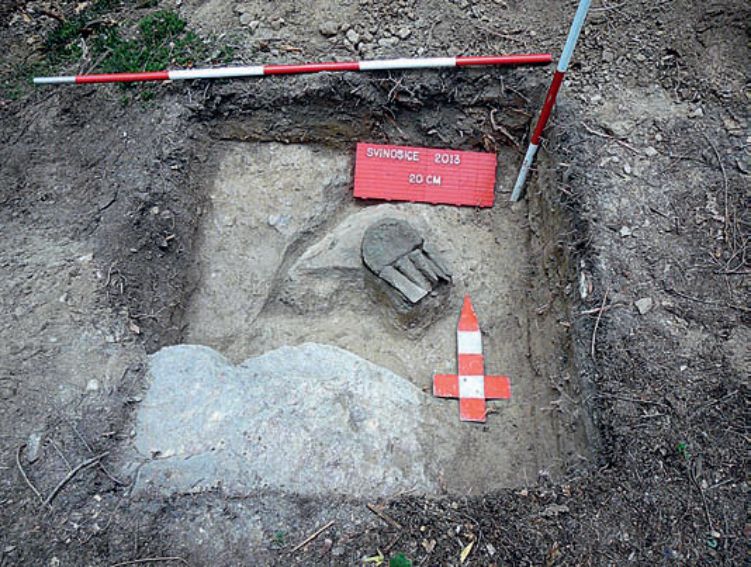An Urnfield period metal hoard from ‘Babí lom’ ridge near Svinošice (south Moravia) and the contribution of its culturally-chronological, semantic and environmental context
DOI:
https://doi.org/10.35686/AR.2020.2Keywords:
Late Bronze Age, Moravia, hoard, symbolic behaviour, weapons, archaeobotanyAbstract
The metal hoard discovered in 2013 during a metal detector survey on the western slope of the rocky Babí lom ridge near Svinošice village (Blansko district) contains six socketed axes, two spearheads and half of an ingot of nearly pure copper. Based on the axes and the unusual point of the spearhead with openings in the blade of foreign origin, the find is dated to the final stage of the Urnfield period. The hoard is remarkable both for the documentation of its original intentional arrangement and for the topographical situation in connection with a watercourse, the dominant landscape feature of the Babí lom ridge and assumed original road. An analysis of preserved plant remnants also contributed in conjunction with radiocarbon dating to the reconstruction of the way the hoard was deposited and the local vegetation spectrum. The settlement-topographic analysis showed a correlation with the period settlement of the region, where, thanks also to the new find, one of the deposition macro-accumulations in Moravia is located.
Downloads

Downloads
Published
How to Cite
Issue
Section
License
Copyright (c) 2020 Milan Salaš, Tereza Šálková, Petra Houfková, Matěj Kmošek

This work is licensed under a Creative Commons Attribution 4.0 International License.










